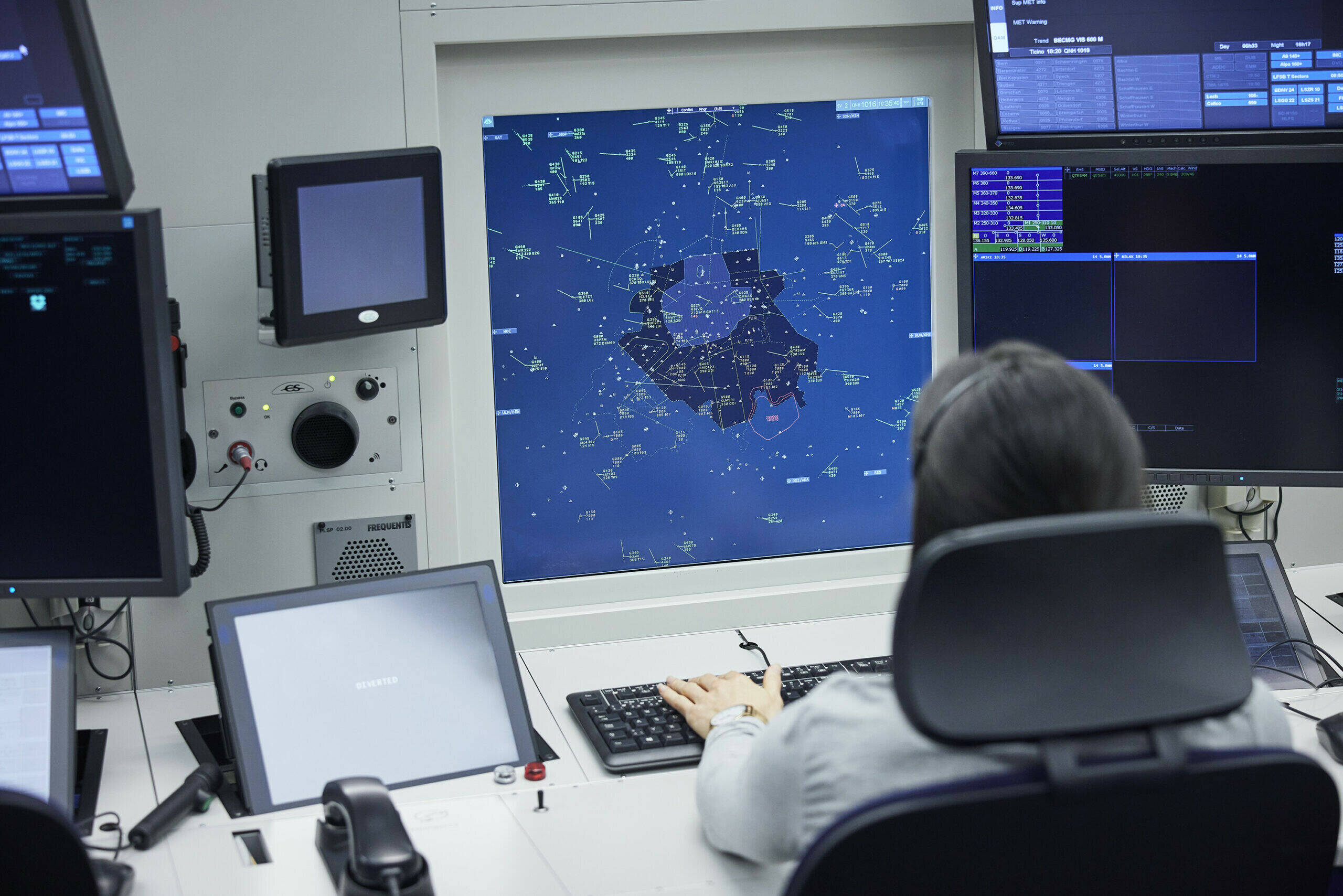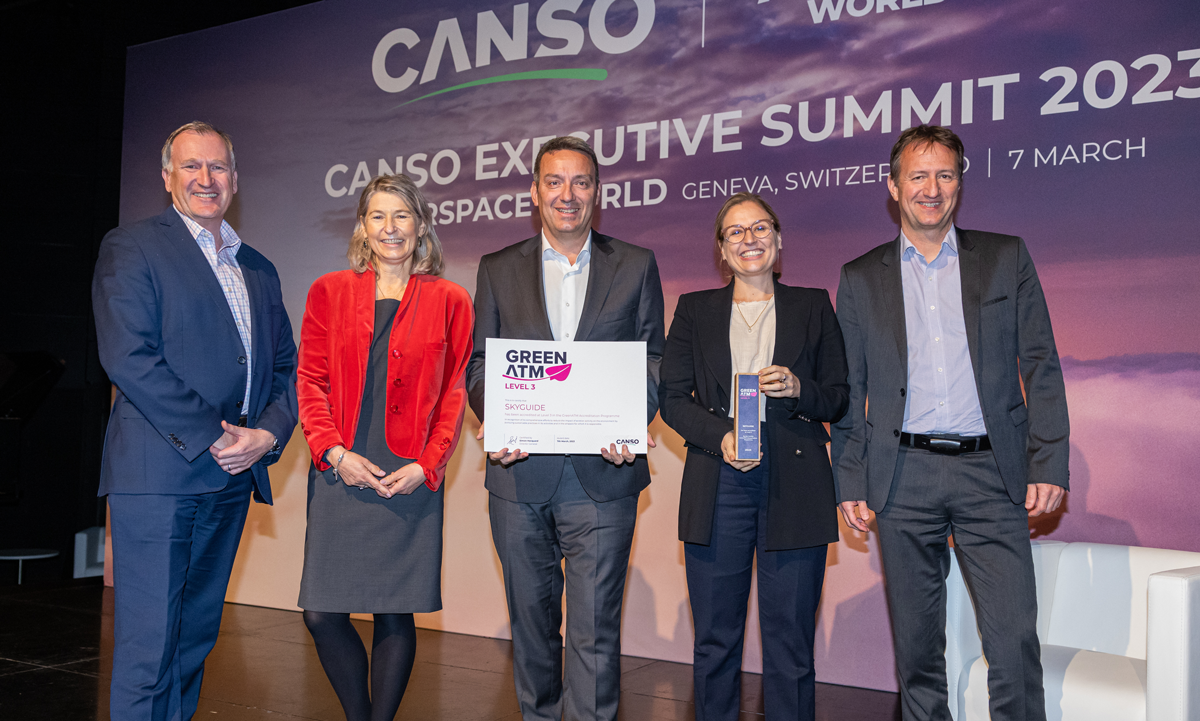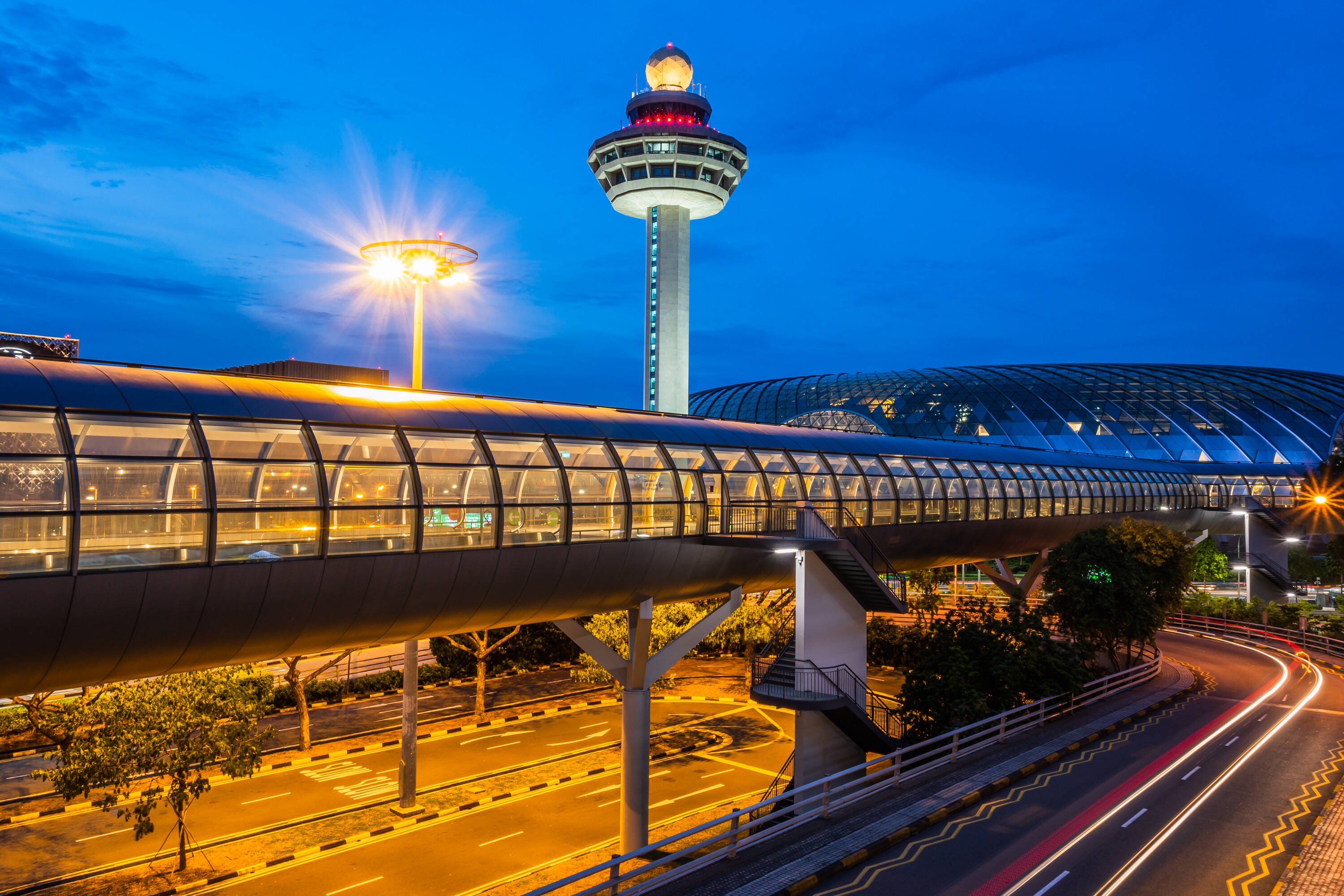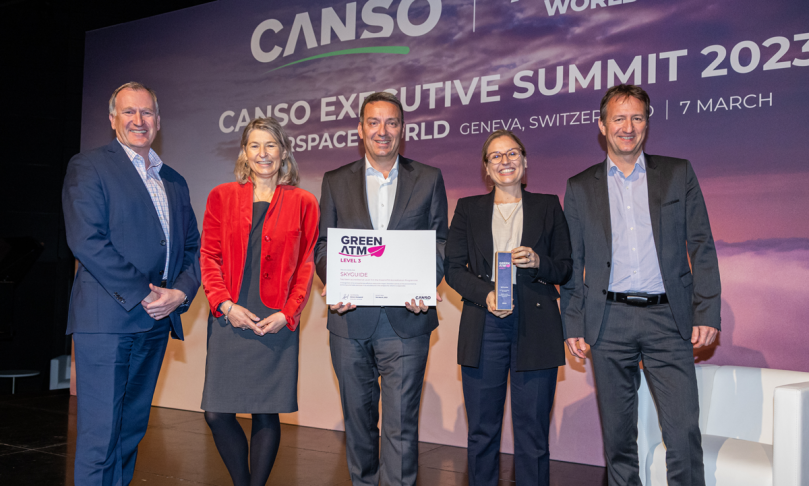Alex Bristol, CANSO Chair and CEO at Skyguide, tells Graham Newton that delivering value will enable CANSO and all ANSPs to remain relevant.

Airspace Article



Is there a challenge you think isn’t being discussed enough in air traffic management?
Yes, airspace structure. This was something I noticed at Airspace World. The talk about technology and sustainability policies is good and progressive, but the fact is that airspace structures are not well built for many of these new ideas and solutions.
Essentially, we are putting new technology in old airspace. If you want to get the most out of the technology and solutions that ATM is pioneering, then we need to change the airspace structure.
Of course, that is easier said than done. Part of the problem is sovereignty, but it really has more to do with arrivals and departures. Changing the climb and approach paths is a complicated process that brings plenty of challenges, including noise and local communities.
Ultimately, however, it is a subject that must be tackled if we want to make our skies safer, seamless and sustainable.
Do you think functional airspace blocks have worked?
No, we have to admit they haven’t delivered on the original ideas and hopes. There have been useful developments in terms of collaboration but ANSPs could have added that value anyway.
The better way forward is for ANSPs to get together with like-minded ANSPs that are at a similar stage in their investment lifecycle and that are exploring compatible technologies and innovations. There are far greater synergies to be had with this approach.
There is still a place for functional airspace blocks at the State level but ANSPs can add more value by exploring beneficial partnerships wherever they can be found.

What is your strategy for Skyguide?
We are already leading the industry in virtualising the technology that underpins our organisation and that will remain the priority.
Once everything is moved into a virtual environment, it is easy to move sectors of airspace to different controllers or locations. That will make us more flexible – such as reacting to sickness, for example. Virtualisation is part of the strategic agenda for more and more ANSPs.
You have to give the right tools to controllers and engineers and focus on where you can deliver value to customers.
There is also a need to integrate U-space with traditional airspace. It’s not a case of whether U-space will be managed by ANSPs or third parties. The point is you can’t have segregated airspace in an airspace as small as Switzerland's. And if you accept integration as essential, then the ANSP has to be involved in some form because it is already part of airspace control.
That doesn’t mean an ANSP must be the only service provider. Nobody needs to control everything – that is not what we need in U-space.
Switzerland is leading the way in integration, and I’m pleased to see progress being made in our country and elsewhere. But we must keep watching the market closely. There will be more disruptive technologies and business models in the years ahead and ANSPs will have to adapt quickly.
What more can ANSPs do to improve sustainability and how will GreenATM help?
At Skyguide, we are very proud of our GreenATM accreditation. Sustainability is one of the most important topics in the years ahead.
There are two aspects to improving sustainability for air navigation service providers (ANSPs). Internally, you have to look at what you can do as a company, and externally, you have to look at how you can improve airspace management so that users can fly in a sustainable manner.
GreenATM is vital to both aspects as it helps ANSPs understand where they should focus. It provides a means of benchmarking, and it identifies best practices that can be shared across the industry. GreenATM assesses ANSPs against five defined levels with increasingly ambitious targets for a variety of topics. So, it is an objective validation of ANSPs’ efforts in sustainability.
This will incentivise and rally teams to work hard in sustainability and show what can practically be done by an ANSP.
Can the desire for collaboration be balanced with faster decision-making and implementation?
Collaboration was the buzzword at Airspace World and rightly so. Only by collaborating will the industry be able to overcome the challenges ahead.
But this is the classic dilemma. How do you have good, productive discussions and yet still ensure you come to a convincing decision that is not a compromise with minimal benefits?
The answer lies in the results. If you focus on the outcomes, then you will arrive at the right decisions. Remember, collaboration doesn’t mean consensus. It is possible to take provocative positions to drive a thought experiment in what would happen.
Collaboration must not be a barrier to doing what needs to be done. But if collaboration is approached in the right way, then it will facilitate good, fast decisions, speedy implementation and benefits across the board.
What are your aims as CANSO chair?
One ambition is to help CANSO work towards self-sufficiency and in that regard the Airspace World event was crucial. It was a huge success from a CANSO point of view and also from Skyguide’s perspective as an exhibitor.
CANSO must be a thought leader for air traffic management in all its forms. That means thinking about new players and ensuring CANSO remains relevant to all its members and the other stakeholders in the value chain – including such big associations as the International Civil Aviation Organisation (ICAO), Airports Council International (ACI), and the International Air Transport Association (IATA).
This may involve looking at the way CANSO is structured and the categories of membership. But the key is building on the excellent work already done and continuing to provide value. If the industry values our contribution, then we will always remain relevant.
The CANSO AGM will provide an opportunity to think about our strategic direction. We have already seen some positive developments in the Global Council, which has a diverse and extensive membership and has delivered the Complete Air Traffic System (CATS) roadmap.
Another element of this that cannot be overlooked is the increasing collaboration with research centres and universities. Working closely with academia will surely present some unique insights in the years ahead and underpin CANSO’s thought leadership.

Alex Bristol
CANSO Chair and CEO,
Skyguide

Alex Bristol, CANSO Chair and CEO at Skyguide, tells Graham Newton that delivering value will enable CANSO and all ANSPs to remain relevant.

Read full article


Is there a challenge you think isn’t being discussed enough in air traffic management?
Yes, airspace structure. This was something I noticed at Airspace World. The talk about technology and sustainability policies is good and progressive, but the fact is that airspace structures are not well built for many of these new ideas and solutions.
Essentially, we are putting new technology in old airspace. If you want to get the most out of the technology and solutions that ATM is pioneering, then we need to change the airspace structure.
Of course, that is easier said than done. Part of the problem is sovereignty, but it really has more to do with arrivals and departures. Changing the climb and approach paths is a complicated process that brings plenty of challenges, including noise and local communities.
Ultimately, however, it is a subject that must be tackled if we want to make our skies safer, seamless and sustainable.

Do you think functional airspace blocks have worked?
No, we have to admit they haven’t delivered on the original ideas and hopes. There have been useful developments in terms of collaboration but ANSPs could have added that value anyway.
The better way forward is for ANSPs to get together with like-minded ANSPs that are at a similar stage in their investment lifecycle and that are exploring compatible technologies and innovations. There are far greater synergies to be had with this approach.
There is still a place for functional airspace blocks at the State level but ANSPs can add more value by exploring beneficial partnerships wherever they can be found.
What is your strategy for Skyguide?
We are already leading the industry in virtualising the technology that underpins our organisation and that will remain the priority.
Once everything is moved into a virtual environment, it is easy to move sectors of airspace to different controllers or locations. That will make us more flexible – such as reacting to sickness, for example. Virtualisation is part of the strategic agenda for more and more ANSPs.
You have to give the right tools to controllers and engineers and focus on where you can deliver value to customers.
There is also a need to integrate U-space with traditional airspace. It’s not a case of whether U-space will be managed by ANSPs or third parties. The point is you can’t have segregated airspace in an airspace as small as Switzerland's. And if you accept integration as essential, then the ANSP has to be involved in some form because it is already part of airspace control.
That doesn’t mean an ANSP must be the only service provider. Nobody needs to control everything – that is not what we need in U-space.
Switzerland is leading the way in integration, and I’m pleased to see progress being made in our country and elsewhere. But we must keep watching the market closely. There will be more disruptive technologies and business models in the years ahead and ANSPs will have to adapt quickly.
What more can ANSPs do to improve sustainability and how will GreenATM help?
At Skyguide, we are very proud of our GreenATM accreditation. Sustainability is one of the most important topics in the years ahead.
There are two aspects to improving sustainability for air navigation service providers (ANSPs). Internally, you have to look at what you can do as a company, and externally, you have to look at how you can improve airspace management so that users can fly in a sustainable manner.
GreenATM is vital to both aspects as it helps ANSPs understand where they should focus. It provides a means of benchmarking, and it identifies best practices that can be shared across the industry. GreenATM assesses ANSPs against five defined levels with increasingly ambitious targets for a variety of topics. So, it is an objective validation of ANSPs’ efforts in sustainability.
This will incentivise and rally teams to work hard in sustainability and show what can practically be done by an ANSP.
Can the desire for collaboration be balanced with faster decision-making and implementation?
Collaboration was the buzzword at Airspace World and rightly so. Only by collaborating will the industry be able to overcome the challenges ahead.
But this is the classic dilemma. How do you have good, productive discussions and yet still ensure you come to a convincing decision that is not a compromise with minimal benefits?
The answer lies in the results. If you focus on the outcomes, then you will arrive at the right decisions. Remember, collaboration doesn’t mean consensus. It is possible to take provocative positions to drive a thought experiment in what would happen.
Collaboration must not be a barrier to doing what needs to be done. But if collaboration is approached in the right way, then it will facilitate good, fast decisions, speedy implementation and benefits across the board.
What are your aims as CANSO chair?
One ambition is to help CANSO work towards self-sufficiency and in that regard the Airspace World event was crucial. It was a huge success from a CANSO point of view and also from Skyguide’s perspective as an exhibitor.
CANSO must be a thought leader for air traffic management in all its forms. That means thinking about new players and ensuring CANSO remains relevant to all its members and the other stakeholders in the value chain – including such big associations as the International Civil Aviation Organisation (ICAO), Airports Council International (ACI), and the International Air Transport Association (IATA).
This may involve looking at the way CANSO is structured and the categories of membership. But the key is building on the excellent work already done and continuing to provide value. If the industry values our contribution, then we will always remain relevant.
The CANSO AGM will provide an opportunity to think about our strategic direction. We have already seen some positive developments in the Global Council, which has a diverse and extensive membership and has delivered the Complete Air Traffic System (CATS) roadmap.
Another element of this that cannot be overlooked is the increasing collaboration with research centres and universities. Working closely with academia will surely present some unique insights in the years ahead and underpin CANSO’s thought leadership.

Airspace Article

Alex Bristol
CANSO Chair and CEO,
Skyguide